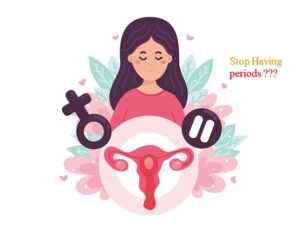Dysmenorrhea (Menstrual cramps) occurs just before and during monthly periods in many women. During the episodes of cramps, women experience cramping or throbbing pain in their lower abdomen.
Dealing with menstrual cramps is quite annoying for some women as the discomfort associated with this condition is problematic. For some women, the severity of symptoms associated with the condition is troublesome. It has a huge impact on their everyday activities for a few days every month.
There are several underlying causes of menstrual cramps. Proper and accurate diagnosis of the cause and effective treatment is the key to relieving pain. Sometimes, there are no underlying causes associated with menstrual cramps. The symptoms associated with such cramps tend to lessen with age and often improve after giving birth.
What are the symptoms of menstrual cramps?
Symptoms of menstrual cramps include:
Pain begins one to two days before menses – continues and peaks one day after the onset of the period and subsides within two to three days.
Intense cramping or throbbing pain in the pelvis and lower abdomen
Sometimes dull and continuous pain
Pain that radiates to the lower back and thighs
Some women may experience dizziness, headache, nausea, and loose stools
Causes of Menstrual Cramps
During menstruation contraction of the uterus, muscles result in the expulsion of the lining of the uterus. Prostaglandins are associated with inflammation and pain. These are hormone-like substances that trigger uterine muscle contractions. In severe menstrual cramps, prostaglandins levels are high.
The following conditions cause menstrual cramps:
Cervical stenosis: small opening of the cervix obstructs menstrual flow in some women. This may lead to the creation of pressure within the uterus – which leads to pain.
Pelvic inflammatory disease: Sexually transmitted bacteria in women who are sexually active cause pelvic inflammatory disease. It is an infection of the female reproductive organs.
Adenomyosis: It is a condition wherein the tissue that lines the uterus starts to grow into the muscular walls of the uterus.
Uterine fibroids: These are benign masses or growths in the uterine wall that cause inflammation and pain.
Endometriosis: Endometriosis is a condition in which tissue similar to the one that lines the uterus (endometrium) grows outside the uterus. It is a painful condition. The abnormal tissue forms scars and adhesions. The tissue is implanted on the fallopian tubes, ovaries, or the tissue lining the pelvis.
Who are at Risk?
The following are the risk factors for menstrual cramps:
- Younger age – less than 30 years
- Women who began their menarche at an early age (at 11 years or younger)
- Menorrhagia – women who bleed heavily during periods
- Metrorrhagia – irregular menstrual bleeding
- Dysmenorrhea – women who have a family history of menstrual cramps
- Women who smoke
Complications
Menstrual cramps associated with certain conditions can cause complications. For instance, fertility issues are associated with endometriosis. Scarring of fallopian tube or infection of the tube associated with PID (pelvic inflammatory disease) may lead to a condition in which fertilized egg is implanted outside the uterus (ectopic pregnancy). Therefore, you must see a gynecologist if menstrual cramps have become annoying by disturbing your life every month. In addition, you should also seek medical care if your symptoms have become progressive or if severe menstrual cramps have started after age 25.





